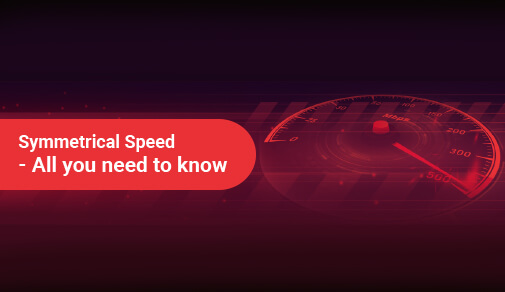Symmetrical Speed - All you need to know
-
0
-
-
2 minutes

Know More
What is Asymmetrical Speed?
If you test your Internet speed at home, you'll find that your upload speeds are usually a fraction of your download speeds. An asymmetrical relation is what this is called. In an office setting where bandwidth is versatile, an asymmetrical connection is typically the best choice. FTTC and FTTP circuits are examples of asymmetrical connections. You can get fast download speeds with these types of connections, with upload speeds being about 10% of the download speeds. Asymmetrical networks often have the drawback of being congested, which means that your Internet speed is directly proportional to the amount of traffic in your city.
Pros of an Asymmetrical Connection
The cost: Connections that are asymmetrical are almost always less expensive.
Download speeds are fast: With an asymmetrical link, you'll get high-speed downloading even though uploading takes a long time. If uploading isn't a top priority for your company, you may not need to spend the extra money.
Why do you need symmetrical internet speeds?
Most of us have managed to get by with upload speeds of less than 50 Mbps. Is symmetrical internet even worth it if we've managed to get by without fast upload speeds so far? You probably don't need symmetrical internet if you're just browsing Facebook, forwarding emails to your nieces and nephews, or searching Google for the latest sports scores. We think symmetrical internet is a huge plus if you’re one of these types of people:







